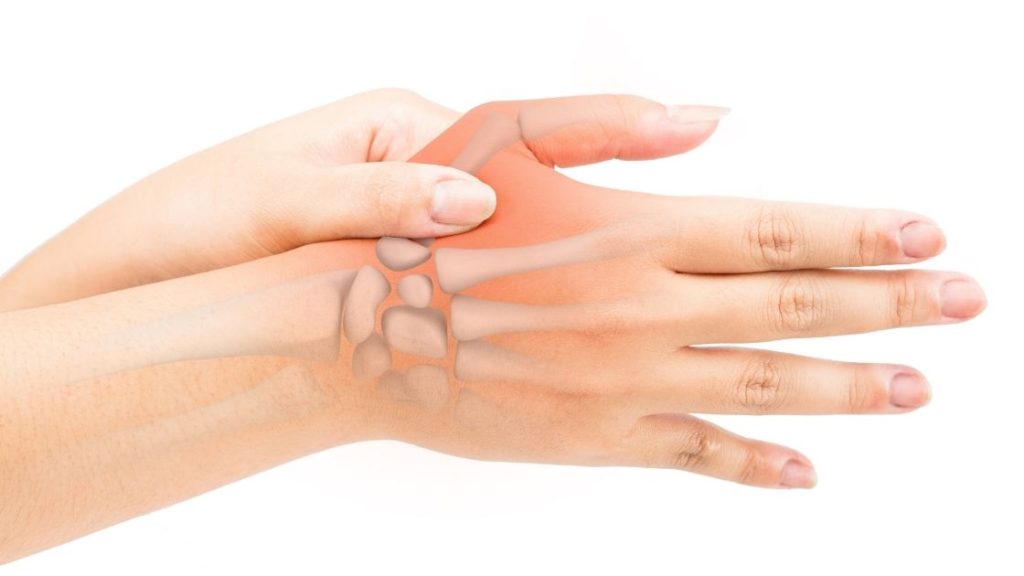Types of Pain Part 1: Bone Pain

Bone pain is sometimes hard to differentiate from muscle pain. Both types affect similar parts of the body, and they can vary in intensity from mild to extreme. In most cases, bone pain is accompanied by a sharper, deeper, and more debilitating ache. Consequently, bone pain should be taken more seriously than muscle pain.
What causes bone pain? In which cases should you seek immediate medical attention, and are there ever cases where you can just wait it out? First, let’s talk about what causes bone pain.
Causes of Bone Pain
- Osteoporosis – Osteoporosis causes bones to become weak and brittle. However, the condition may be asymptomatic until a bone fracture occurs. With osteoporosis, generally inconsequential actions, such as bending over, can cause a fracture.
- Osteoarthritis – The breaking down of cartilage within a joint will eventually cause degenerative changes in the bone.
- Hypothyroidism – With hypothyroidism, the bones’ metabolism slows significantly. When the continual cycle of bone growth and reabsorption is disrupted, the bones’ healing process is heavily impacted.
- Menopause – Estrogen reduces inflammation and protects the bones. When menopause causes estrogen levels to fall, the bones are more susceptible to osteoporosis and osteoarthritis.
- Injury – One or more of the previously listed conditions can contribute to a fracture. In the cases where an underlying bone condition isn’t present, bone injuries can be caused by sports, falls, or blunt force trauma.
- Stress Fractures – These occur when a strained muscle goes untreated for a long period of time.
- Bone Cancer – Osteosarcoma, non-Hodgkin lymphoma, multiple myeloma, chondrosarcoma, and bone cell tumors are marked by a dull deep pain in a bone or bone region.
When to Seek Immediate Help
Don’t ignore the following symptoms:
- Dull deep ache in the arms, legs, back, ribs, or pelvis.
- Presence of a mass or lump
- Swelling
- Inflammation
- Rapid unexplained weight loss
- Fatigue
Also Seek Immediate Medical Help if Excruciating Pain or Inability to Move Occurs After Any of the Following:
- Low-impact activity – Bending over, rotating your neck, stretching, etc.
- Coughing – If something as small as a cough causes instant pain, this could be a sign of osteoporosis. Early diagnosis is crucial to preventing the condition from worsening.
- Weight bearing – When a deep pain causes you to lose balance when you try to walk, you may have a hair fracture in your foot.
- High-impact injury – Don’t wait it out if you experience intense pain after a blow to any part of the body.
Should You Ever Wait it Out?
If the pain isn’t debilitating and you can’t quite place where it’s coming from, it’s most likely a muscular pain. Bone pain is easier to pinpoint on the body, whereas muscle aches feel more generalized. However, if the pain worsens and is present for more than 48 hours, that’s when you should seek medical care.
Now You Know!
In the upcoming blog Types of Pain: Part 2, we’ll discuss what you need to know about muscular pain!
Stay happy, healthy, and take good care of your bones! Be sure you’re getting enough calcium and vitamin D!

Katrina Jenkins
Author, Licensed Massage Therapist
Katrina Jenkins graduated from Towson University in 2013 with a Bachelor’s Degree in Health Science and worked as a nurse’s aide briefly before pursuing her true passion. She graduated from the Massage Therapy Institute of Colorado in April 2016 with honors and completed the Touch of Healers Scholarship Program the following summer. She has been a part of the Moyer Total Wellness Team since the summer of 2017.
Resources
D’Souza, G. (2021). Difference between bone and muscle pain: Causes, treatment, and more. [online] www.medicalnewstoday.com. Available at: https://www.medicalnewstoday.com/articles/difference-between-bone-pain-and-muscle-pain.
Shaw, G. (2021). What to Know About Bone Pain. [online] WebMD. Available at: https://www.webmd.com/pain-management/bone-pain-what-know#:~:text=Bone%20pain%20usually%20feels%20deeper.
Whelan, C. (2017). Menopause and Pain: Is There a Connection? [online] Healthline. Available at: https://www.healthline.com/health/menopause/pain#outlook.
Williams, G.R. and Bassett, J.H.D. (2018). Thyroid diseases and bone health. Journal of Endocrinological Investigation, [online] 41(1), pp.99–109. Available at: https://www.ncbi.nlm.nih.gov/pmc/articles/PMC5754375/#:~:text=Hypothyroidism%20in%20childhood%20causes%20delayed.
Photo Credit
Canva by horillaz
